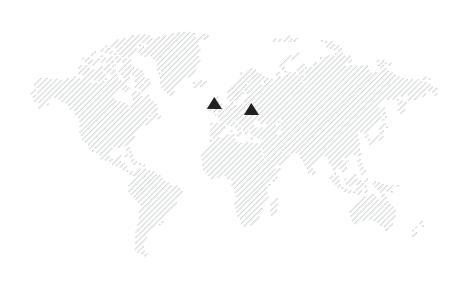This year I celebrated my fiftieth birthday. On this occasion I had to turn to the archives to select one but significant photograph.

Before this photo, I have already completed an internship in Hemel Hempstead near London at Kodak, where we, new recruits, were provided with up-to-date knowledge of the capabilities of modern photographic films. We only superficially went through the possibilities of Computer-to-plate technology. This was perceived in those years as something distant, very expensive and therefore inaccessible. The CIP3 standard has already been announced, but for our printers even a plate scanner for adjusting colour zones was something unattainable. Ahead, just a month from the day of this picture, is the even more important initial 2-week training at Heidelberg headquarters in Germany.
So why did I choose these pictures?
The thing is that these years of youth, the arrival of modern technologies on the CIS market, gave me hope for a prosperous future. Thanks to the knowledge gained at Heidelberg, I felt more confident in my classes at the university of printing. And vise versa, thanks to the knowledge of technology I received at the University, I was able to understand in more detail the modern trends in printing. I am very grateful to Heidelberg for setting up their demo room right on the ground floor of the State University of Printing. I could always go there and show my student friends new machines that they had not even heard of.
I am grateful to the then Sales Director Yuri Ukolov for hiring me at that time. Special thanks to product specialist Igor Egorov, who spent a lot of time at the end of 1997 to pass on his profound knowledge to me. I hope I have not disappointed him.
Looking back, I can say that despite the economic hardships of the nineties, we, the Eastern Europeans, felt inexplicably confident about the future. That borders would open, that we would be able to travel wherever we wanted. That we would manage this world and lead it in a direction that would be beneficial to all in terms of co-operation. It turned out both as expected and not quite as expected. I miss that time a little bit, those wise people who surrounded us then. Russia is a country that was not my native country. But I met a lot of good people there, with whom I had the opportunity to co-operate for many years. Now our horizons have expanded much further, and my friends live all over the world – in Kazakhstan, Uzbekistan, Ukraine, Lithuania, France, Belarus, Germany, and many other countries.
Printing has always been considered an industry for the intelligent part of society, for the books that printers produce bring knowledge to the world. It is a pity that many of my acquaintances from Russia have fallen into this cancer decease into which their country has descended. It is sad that many of my acquaintances had to be excluded from my friends after 24 February 2022, and even left the group “20 years of MSUP” on WhatsApp. Things are much more encouraging with Belarus where I was born and worked for many years – literally everyone I knew and socialised with over half a century turned out to be adequate people. Unfortunately, many had to leave the country after 2020, but the good news is that they have moved in with us, on the bright side, and we can still continue to communicate and co-operate with them.
Life goes on, and all we have to do is not only hope for the best, but to bring it as close as we can.




